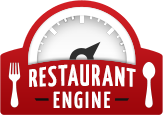How the Best Food Trucks Deal With Food Costs and Quantities
A recent study suggests food trucks will top $2.7 billion in revenue growth by 2017. As a current or potential food truck owner, you’d probably like to get in on the staggering financial potential food trucks provide.
In this blog post, we’ll talk about how the best food trucks deal with food costs and quantities so they can plan for profits. By paying great attention to food costs and quantities and establishing an appropriate pricing plan for each menu item, food trucks have a great shot at a profitable business.
First, let’s tackle your food costs and menu pricing. After accounting for start-up costs, setting prices for menu items is one of the most crucial elements to running a food truck business. Menu prices directly account for your ability to sell your items, cover your costs and generate the maximum level of profit.
It takes practice to purchase the right amount of food and not let any of your valuable resources go to waste. The term COGS in the food truck industry stands for cost of goods sold. COGS covers the money food trucks spend on supplies and food ingredients. A food truck’s cost of goods sold should account for no more than 25-35% of sales. Let’s talk about those costs.
Food Costs
You’ll want to base menu prices on not only the cost of food, but the cost that goes into preparing each item. To begin figuring your pricing equation, you’ll need to track food costs and figure out what the cost per serving is for each menu item. Make sure to account for factors out of your control, such as bad crops, spoiled food and fluctuating prices.
When it comes to food trucks, customers are most often looking for food that is either unique, organic, made from fresh, local ingredients, has flair, and above all is made with top-notch ingredients.
Finding the best quality food for your meal preparation at the lowest prices can be a challenge. Plan your shopping trip beforehand and maximize your time when shopping several stores. Do your research and know where to find the best prices:
- Bulk Stores/Warehouses: These stores often offer huge savings on fresh produce, staples like noodles and rice and paper products. Be careful when purchasing from warehouse stores and make sure you’ll consume the fresh ingredients by the sell-by date. Additionally, think about where you’ll store your items. Food trucks may be big, but they certainly won’t hold an overly large haul.
- Local Grocery Stores: Sign up for mobile coupons from your local grocery store and check the store’s weekly ad. You’ll also maximize your dollars when shopping your store’s sale days.
- Farmers Market: If your focus is healthy, fresh and local ingredients, farmers markets are a good bet. Learn how to shop in-season foods for the best prices. If you regularly shop from the same farmer, try to set up a bulk deal or offer a bartering relationship. This can help keep your costs at a more predictable rate. (Tip: Farmer’s Markets are a great place to set up your food truck for business!)
- Specialty Stores: Food trucks are special, and the food they serve is unique. You’ll most likely find yourself shopping at a specialty store for special meat, spices, fish, artisan cheese and ethnic items. Again, try and set up a deal with the store owner to secure lower prices.
- Food Wholesale Business: Many restaurants purchase the bulk of their food from food wholesalers. This can be another avenue for your ingredients and supplies. Make sure and do the research and negotiate the best deal so you don’t overspend.
The Time Invested
Basic math dictates the literal cost attributed to your menu items, but accounting for your time isn’t quite as clear cut. It is really easy to short-change yourself at this point. After all, just exactly how much is your time worth?
When adding this amount into the price of your menu items, make sure that you are earning a reasonable amount of money. You’ll need a sustainable income in order to operate your food truck at full potential. Working two or three jobs on the side takes away from the time you can dedicate to your food truck business.
The best food truck owners know their time is imminently valuable. (tweet this)
Lastly, whether you have employees now or will in the future, adding labor costs into your menu price allows you to account for their salaries as well.
We’ve talked about food costs and how much each item costs to make; and we’ve added in the cost of your time and additional labor. Now let’s dive into food quantities. One of the most difficult parts of planning is estimating how many meals or menu items you’ll sell.
Food Quantities
To guess, or estimate, your anticipated sales volume, you’ll need to ask yourself some questions. Hopefully when you wrote your business plan, you discovered the answers to many of these questions. If not, you’ll need to do some research to fine tune your food ordering and meal planning.
Who are your customers? Is your target market broad-based or refined? Is your customer base made up of lunchtime downtime office workers or the casual walk-up visitor without any defined food preference? If there are other food trucks nearby, consider asking them how many meals they serve at lunch or dinner time. You’ll also need to adjust your quantities and pricing if your customer base is smaller and more exclusive because you won’t sell as many meals.
Reduce Waste
According to an infographic, the restaurant industry throws out 4-10% of food before it ever reaches the customer’s plate. Although some waste is unavoidable, as a food truck owner, you’ll want to keep this cost as low as possible so you can price your items appropriately.
Account for some shortage and food waste in your pricing equation and you’ll have a buffer. Plan for about 15-25% wasted product. You may be able to bring waste margins down and use more of the food you buy, but in the beginning, figure this percentage into your final menu prices.
If you measure all the ingredients in your food-preparation procedures, and you follow this recipe every time, you’ll have a better idea how to manage food costs, quantities and waste reduction. Food trucks owners are at risk when food prep measurement isn’t done uniformly. The best food trucks enforce strict measurement guidelines for all recipes.
Even the most well-run food trucks have slow-moving menu items at one time or another. Take advantage of daily specials to make use of soon-to-expire bread, dairy items, fruits and vegetables. Create your specials around these items to reduce waste.
Stop feeding your food costs and take an inventory. The best food trucks manage rising food costs by paying close attention to portion control, high-cost menu items and production planning. Food truck owners benefit by reviewing one of these items each day the truck is in operation. Don’t forget to take a look at the items that get thrown into the trash. This can indicate customers are too full to finish their meal, or they dislike a menu item.
Do regular and thorough inventory counts to learn you if you are ordering too much or too little. (tweet this) Try to be consistent with your food purchasing. Some of this is “what your gut tells you,” but the best food trucks learn this over time. A regular inventory can help you anticipate weekly expenses and keep food costs and quantities steady.
We’d love to hear how your food truck journey is going. Comment below! If you are looking for a website for your food truck business, contact us. We’d love to help!
Images: Phillip Pessar & m01229




Leave a Reply